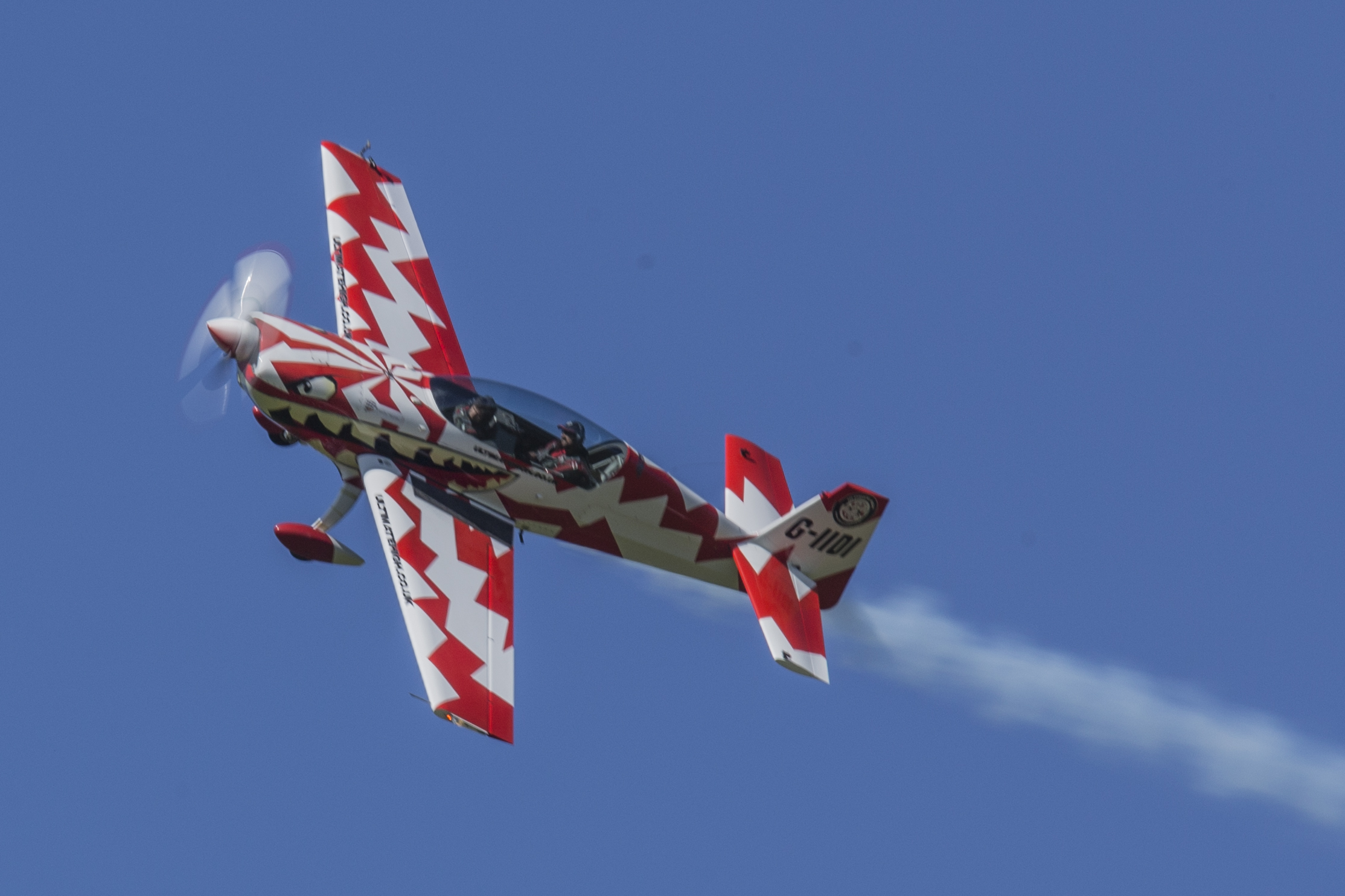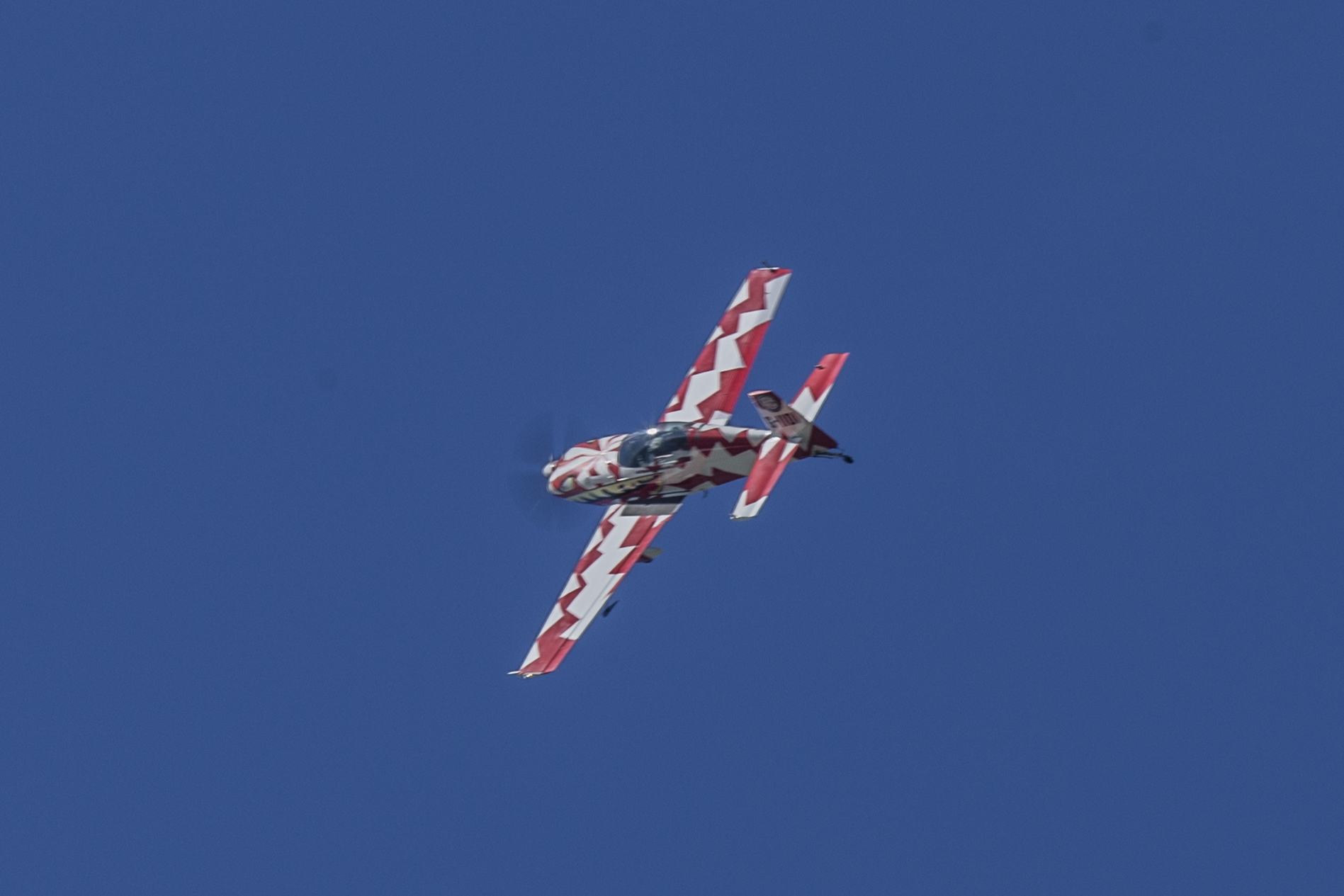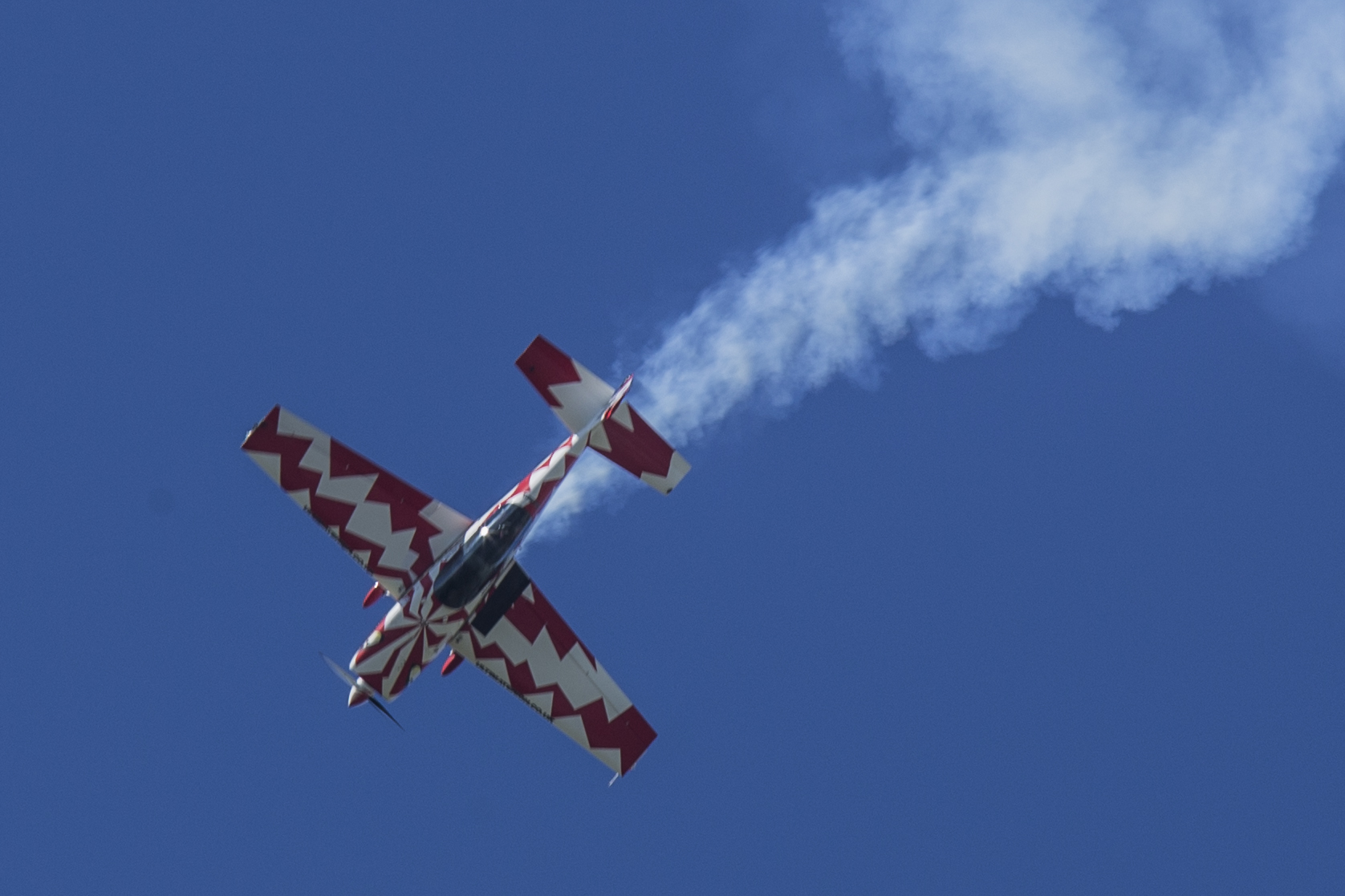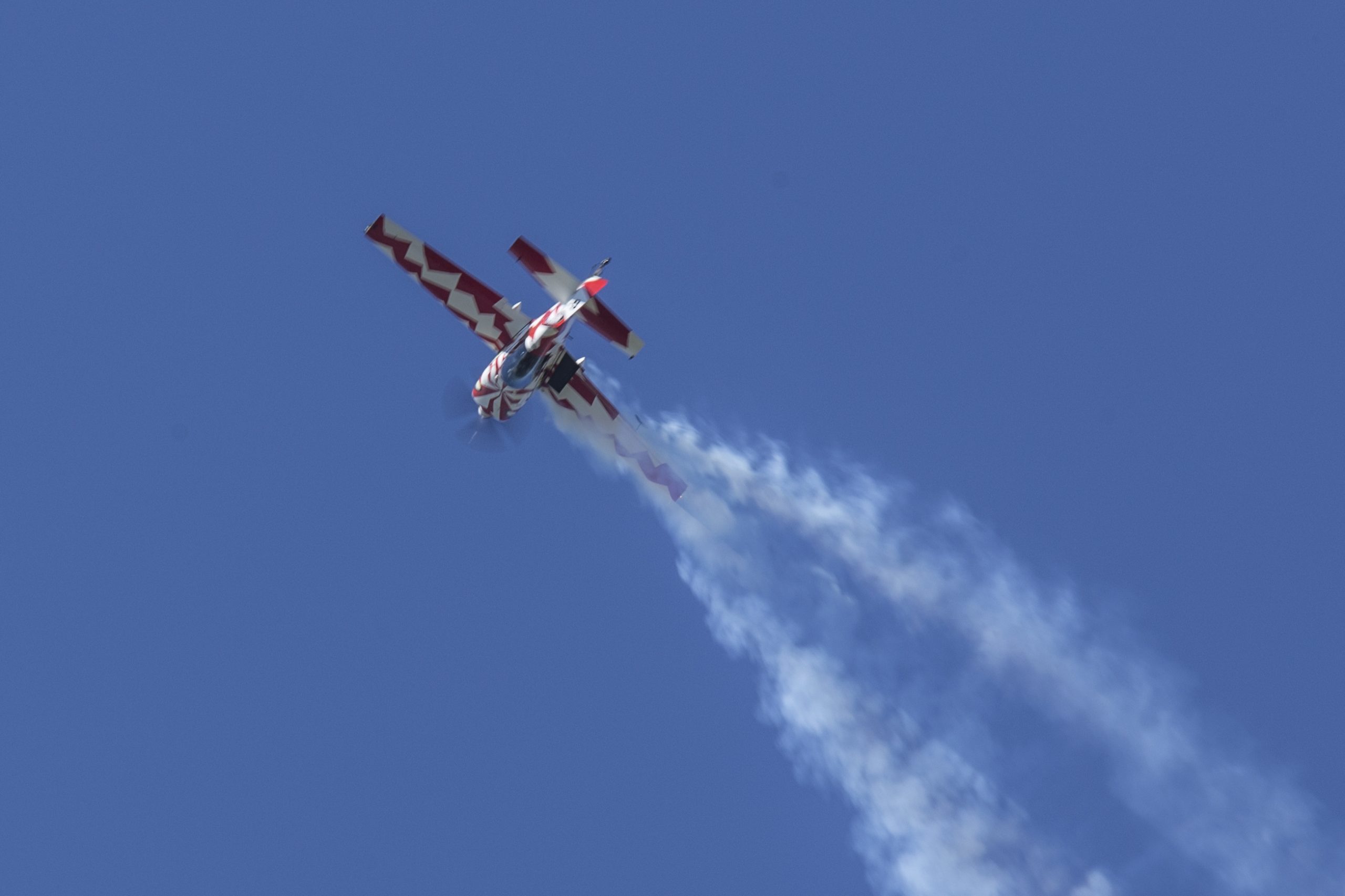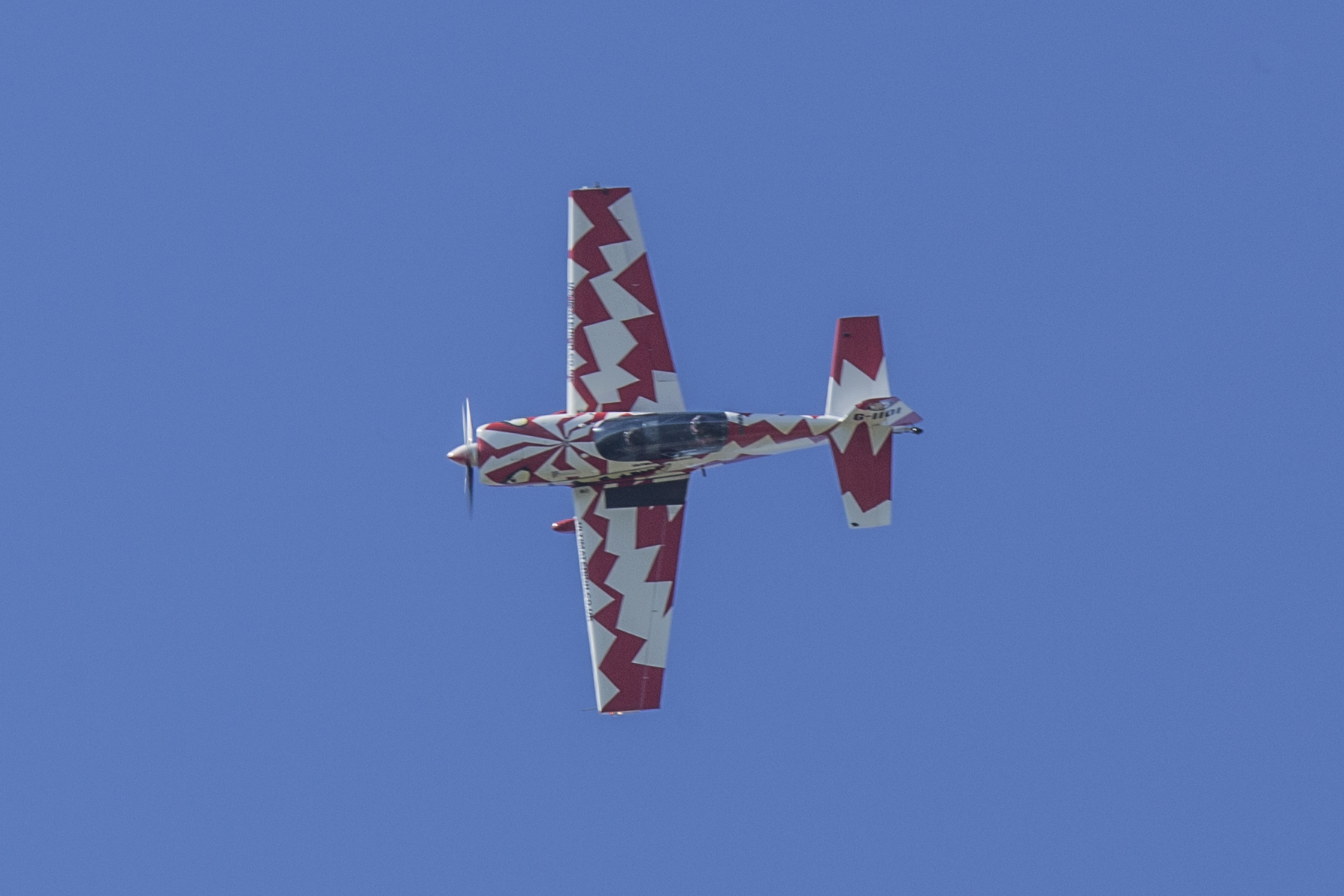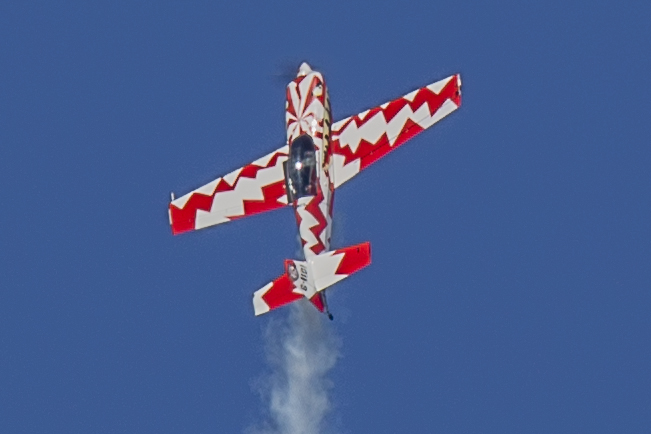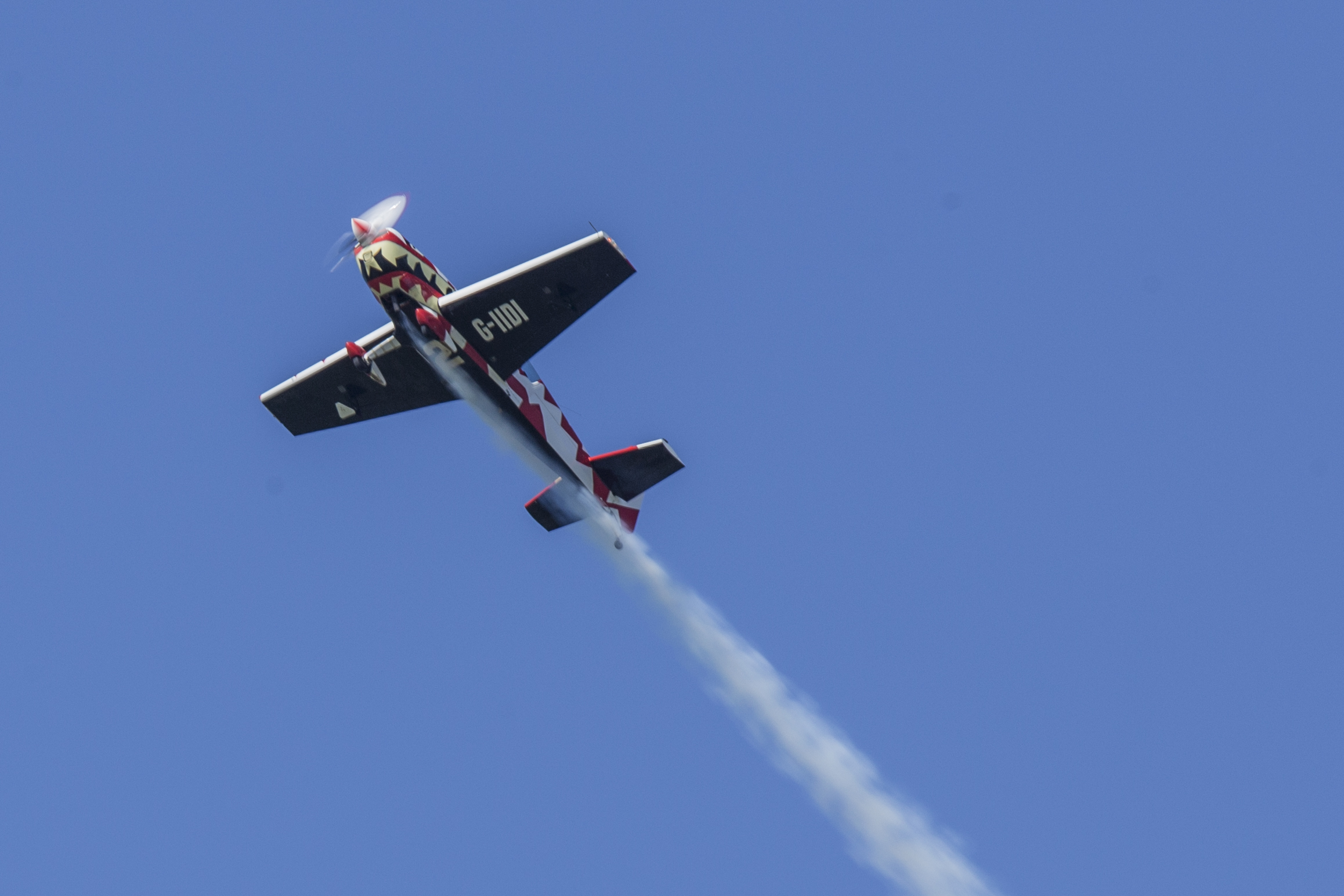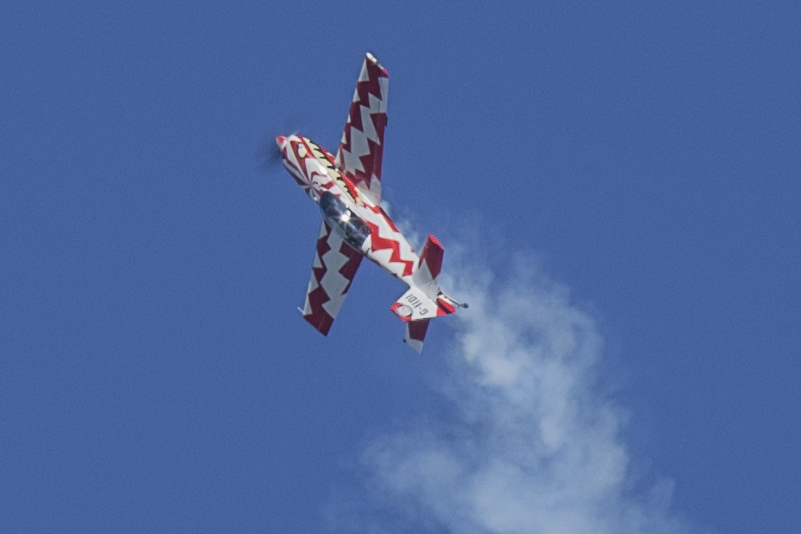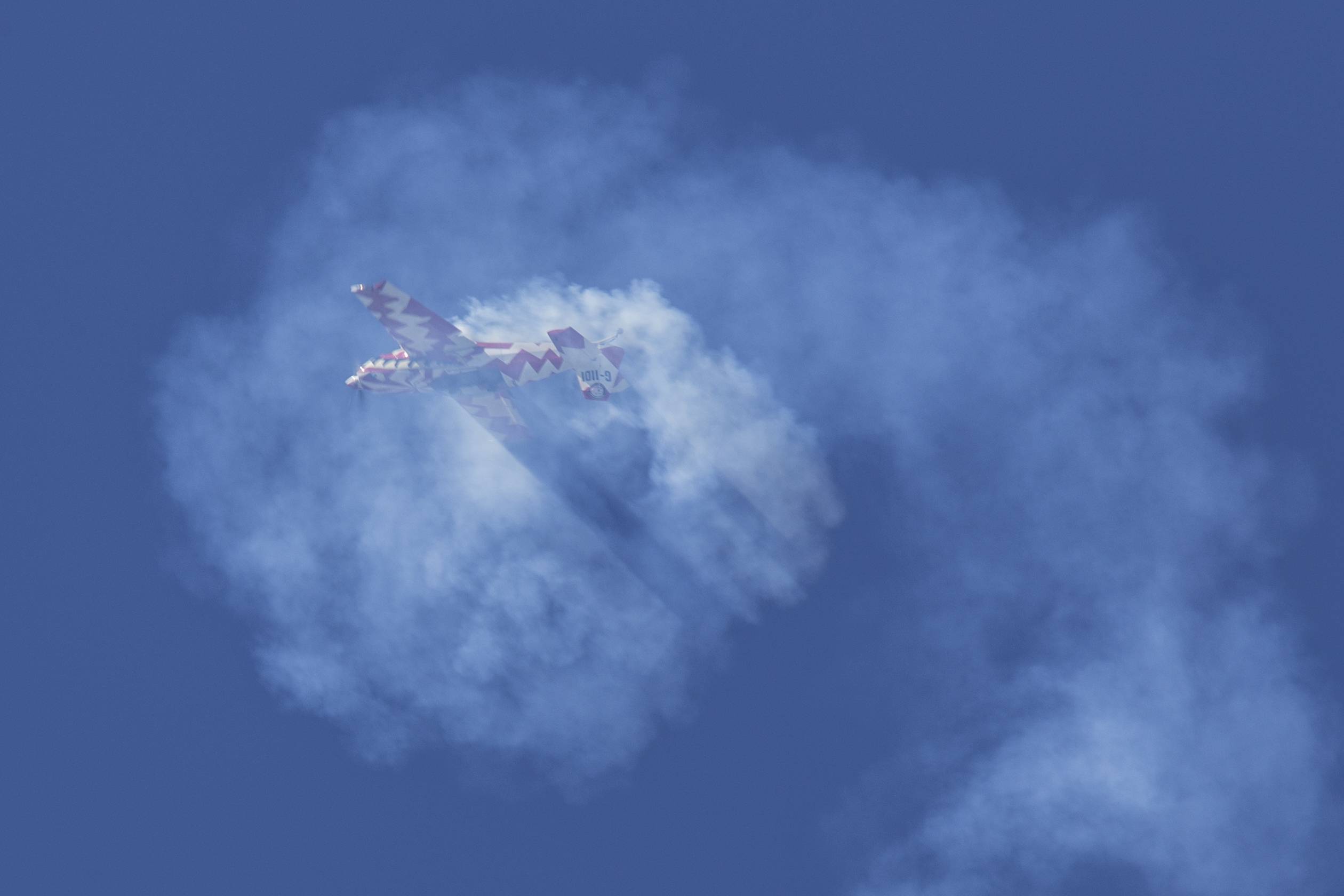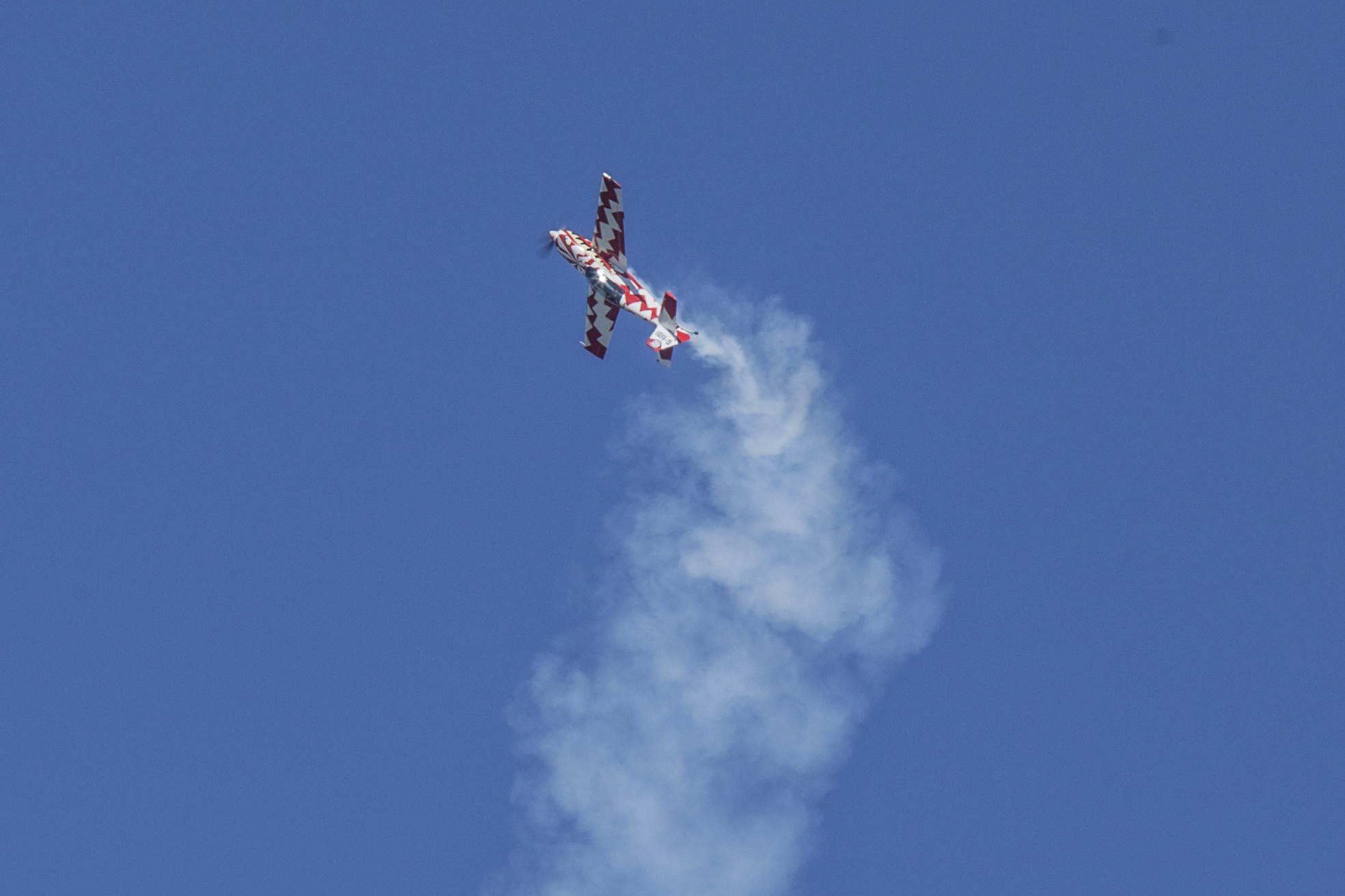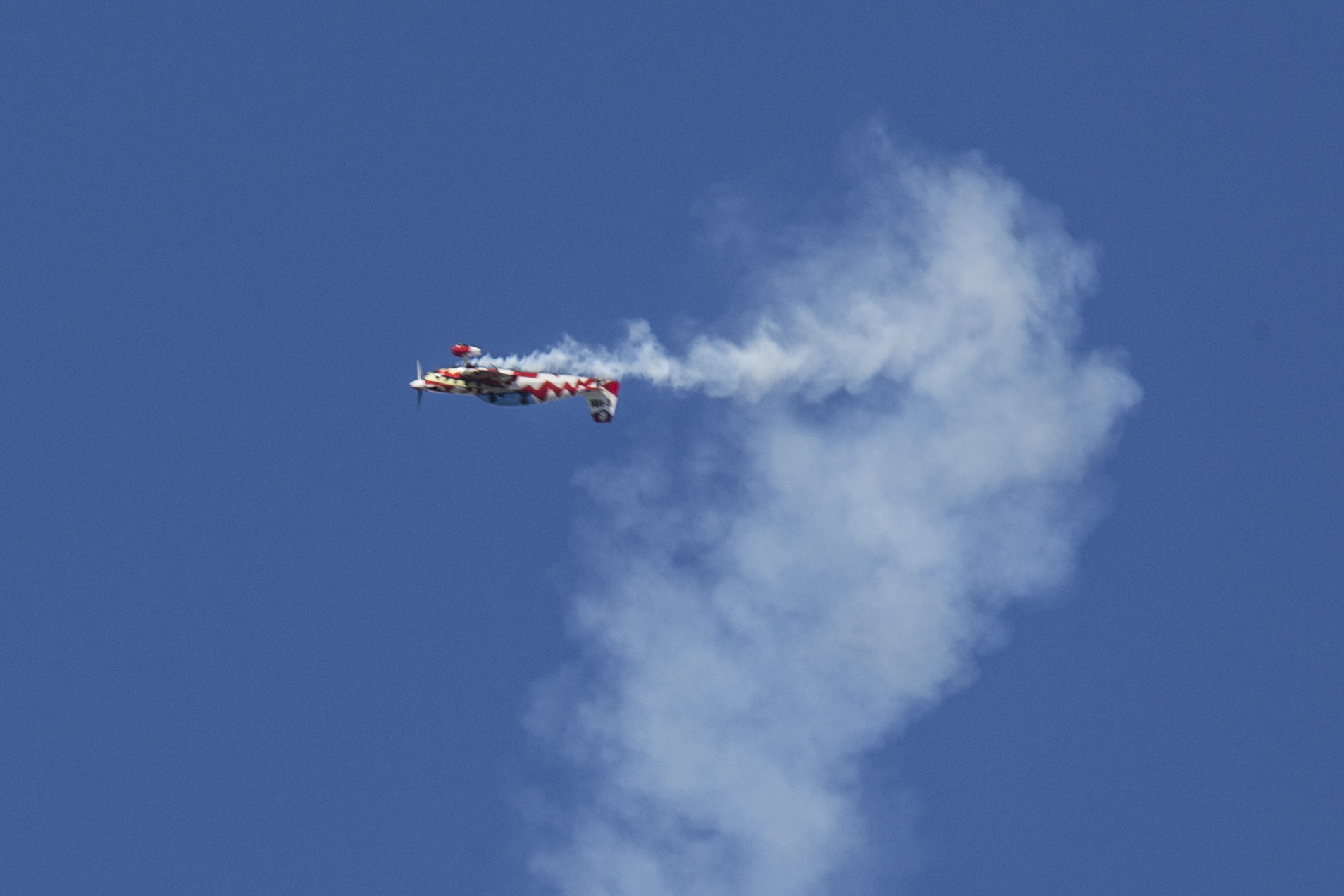Enter now for your chance to win this fantastic experience.
Maximum tickets per participant is 50
This flight profile is only for the most extreme individuals on the planet! Flown in the world’s top two-seat certified competition aerobatic aeroplane (the Extra300), with a top air display pilot, you will have the opportunity to experience the massive forces experienced at the very edge of the flight performance envelope!
After a detailed flight and safety briefing, you will be introduced to the effects of controls and aerobatics.
Then – can you handle – THE BIG FIVE EXTREME MANOEUVRES?
1. Cravat
Your introduction to the world of gyroscopics. A vertical twisting manoeuvre so named because it resembles the instructions used to teach people how to do up a bow tie.
2. Inverted loop
The Extra has a symmetrical wing and so everything that can be done the right way up can also be done upside down! For this the aeroplane is rolled upside down in level flight, and then ‘pushed’ at -3G to fly an outside or inverted loop.
3. Ruade
One of the most dramatic of all the gyroscopic figures and used to great effect at Airshows. At high speed, the Extra is pulled up to 45 degrees, rolled onto its side in knife edge flight, and then ‘tumbled tail over nose! Ruade is a French word used to describe the huge kick from the hind leg of a horse.
4. Inverted push-up to Lomcevak
From upside down flight, the Extra is pushed upwards onto the 45degree inverted upline and then ‘kicked’ into a Lomcevak tumble. The name allegedly comes from a Czech word describing the motion of a drunken man!
5. Mulleroid
Invented by World Aerobatic Champion Eric Mueller, this incredibly complex figure starts with a 6G pull to the vertical upline, where an aileron roll to the right is followed by a series of negative flick rolls. As the energy declines and the cone of rotation expands the aircraft is transitioned into a downwards erect flat accelerated spin.
| OVERVIEW | |
| Arrival/Brief | Arrive and get kitted out in a genuine military flying suit.
The Flying & Safety Brief includes how to fly the aeroplane and how to handle the ‘G’ forces. |
| Flight | Details as described above. You sit in the front seat of the aircraft, with your instructor in the back. Flying time is around 30 minutes (20 minutes airborne) |
| Results | If you manage to complete all 5 of these extreme manoeuvres in one flight, your name will be added to the “Utter Nutter” Roll of Honour Board. |
| Aircraft | Extra 300 |
| Duration | Allow 2-3 hours with us. Flying Time is approx 30 minutes (20 minutes airborne) |
| Restrictions | Weight limit is 15 stone 7lbs. |
| Availability | Flights take place on weekdays April-October inclusive (subject to weather and airfield conditions). |
Need to knows
Must be physically capable of getting into and out of the aircraft without assistance**.
Must complete a Medical Self-Certification Form before flying with us
If you are aged 71 or over, we will require a letter from your doctor confirming your suitability to fly with us
Extra300 Aircraft Limits: Weight limit is 15 stone 7 lbs (98kg). Minimum height 5ft (1.52m). Maximum height 6ft 4″ (1.93m)
T67 Firefly Aircraft Limits: Weight limit is 17 stone (108kg). Minimum height 5ft (1.52m). Maximum height 6ft 5″. (1.95m)
Weight limits are based on participant weight fully clothed and wearing shoes.
It is essential that you wear light flat shoes with good grips – trainers are ideal.
We shall kit you out in genuine military flying suits – please wear comfortable casual clothes to go underneath – i.e. trousers/shorts, T shirt, and sweater.
You should not wear skirts/ dresses.
It is a good idea to bring a light jacket as it can be exposed on the airfield.
Sunglasses are recommended.
Loose objects (including cameras, go-pros and phones) are not allowed in the aircraft cockpit.
We normally suggest that you eat a light breakfast/snack 1-2 hours before you fly as flying aerobatics on an empty stomach (which causes low blood sugar) can increase the propensity for airsickness.
A heavy meal just before your flight is not recommended, and neither is strong tasting food and drink (coffee in particular can cause nausea)
Alcohol MUST be avoided.
Family/friends can come to the airfield itself, HOWEVER, due to space constraints, only 1-2 guests per flying participant can be accommodated in our crew room during the flying brief.
Your family/friends will only be able to see you get into the aircraft, take-off and land, and will not see you doing aerobatics.
We recommend that you do not bring young children as there is little to entertain them at the airfield.
Dogs are allowed at the Aerodrome, but must be kept on a lead at all times and not cross any fences/barriers (i.e. cannot go airside). Dogs are not allowed in the crew room/offices but there is grass space outside the building where you can sit with them.
For safety and insurance reasons family/friends are not allowed airside.
You are encouraged to do as much (or as little) of the flying as you like. As you will be participating in a trial lesson, your flight will count towards a private pilot’s licence and you will be able to fly the aircraft in all regimes of flight apart from close formation, take-off and landing.
You will be offered the chance to carry out aerobatic manoeuvres yourself, even if you have never flown in a light aircraft before, all under the close guidance of the instructor who will show you the way.
Flights are tailored to the individual and can provide anything from a gentle flying lesson around the area to extreme aerobatics and everything in between, depending on your nerves or your g-tolerance. This will all be discussed as part of the initial briefing session and will be continually monitored during the flight by experienced instructors.
Although some participants expect to feel ill, less than 1% actually are, partly because you actually fly a large proportion of the flights yourself, and if you feel uncomfortable, you can relax or return to base at any time.
Group briefings normally take place promptly at 10.30am or 1.00pm (we ask that you arrive at least 30 minutes early to check in and do paperwork etc). You are usually briefed in groups of typically 4-6 people, and then flown sequentially in pairs or sometimes threes. The briefing is very thorough, and is followed by changing into flying kit, so the first flying “wave” starts around an hour after your briefing start time. The aim is that you spend no longer than 3 hours from start to finish, but occasionally it may be longer than this if delayed. If all runs smoothly, the experience should take 2 – 2.5 hours.
It is difficult to give very accurate times of when you will be flying as there are many things that can cause delays, which include weather, queues for refuelling, minor technical hitches etc. We will try to keep you informed of the time that you are likely to be in the aircraft. If you are under time pressure, please make sure that you let us know in advance and we will endeavour to fly with you first.
Quoted flight times are defined as “airborne time + 10 minutes”; the 10 minutes on the ground is an average time and can vary considerably depending on how busy the airfield is and other factors. A 35-minute flight will therefore consist of 25 minutes in the air and around 10 minutes on the ground, with the “loggable” time in the pilot’s logbook being 35 minutes (in line with the aviation industry standard which measures flight times from the time the aeroplane starts to move up to the point where it finishes moving). The airborne time may occasionally vary from the time quoted (it may be more or less) for several reasons including busy aircraft circuit traffic on returning to the airfield, passenger airsickness etc.
A personalised flight certificate signed by your instructor will be provided.
Please aim to arrive at least 30 minutes early. If you arrive late and we are unable to fit you into the schedule, you may forfeit your voucher entirely.
Flight subject to weather
Aircraft are meticulously maintained to the highest possible standards, in strict accordance with CAA regulations. From time-to-time minor technical faults may arise which may preclude flying either temporarily or for the whole day. If this situation occurs, we will endeavour to fix the problem or “borrow” another aircraft wherever possible, but this cannot always be guaranteed and, as a last resort we may have to reschedule you to another day at late notice.
Airfield availability is not normally an issue, except during the winter months when the grass runways can be prone to waterlogging which means that it is not safe to operate aircraft, so the airfield may be closed. Other occasions when the airfield may not be available to us include aircraft unserviceability’s that close the runway, events (air shows etc), runways unusable (e.g. due to flooding, chemical/oil spillages and resurfacing work). Occasionally, airfields will be closed at short notice (including for royal flights) and we may not always receive sufficient notice to cancel scheduled flying in time.
There is a huge emphasis on safety, as the military ethos insists that every eventuality is prepared for, no matter how unlikely. The care of guests is paramount and the same safety standards used by the RAF to ensure that everybody enjoys a great time without taking risks is employed. The aircraft are maintained in strict accordance with CAA regulations and instructor pilots have supreme credentials. Although aerobatic and formation flying may ‘look’ dangerous, the flying is done within strict rules around procedures, minimum altitudes and distances between the aircraft. The instructors have many thousands of hours of military and civilian experience which helps ensure that they are perfectly prepared for flying with you.
The operator is Fully insured at Lloyds for personal and third-party risks up to £10 million, and your own personal policies are normally unaffected by the activity (although you should check this in advance with your provider). Copies of insurance cover are available on request. Please note that personal effects are not covered.

